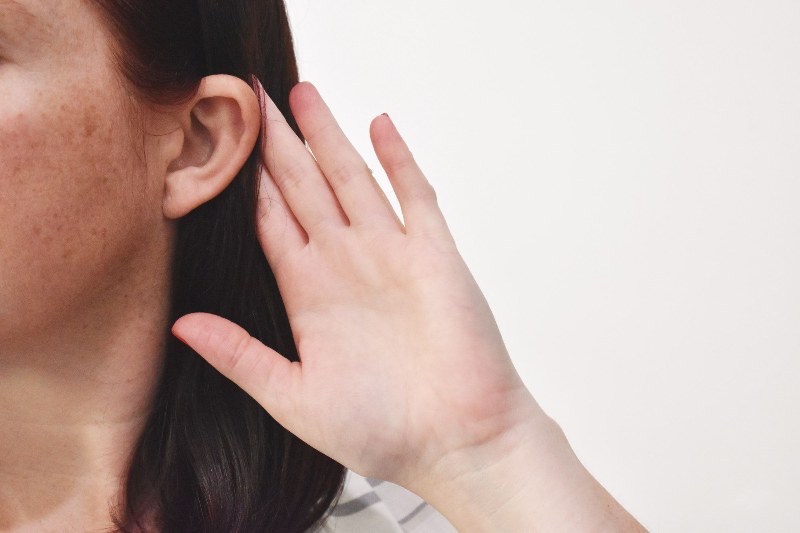Introduction
The human auditory system, a marvel of nature, plays a crucial role in our connection with the world. However, for many, this connection is hindered by Sensorineural Hearing Loss (SNHL), the most common form of hearing impairment. This post delves into the intricate world of SNHL, focusing on groundbreaking research, potential treatments, and contributing factors. Our goal is to provide a comprehensive resource for adults grappling with SNHL.
Cutting-Edge Research: The Quest for a Cure
The pursuit of a cure for SNHL is a dynamic field, with researchers globally exploring various avenues. A key focus is the regeneration of damaged cochlear hair cells, which, when impaired, lead to SNHL. Recent advancements suggest potential methods to stimulate these cells’ regeneration, offering hope for reversing SNHL effects.
Over-the-Counter (OTC) Hearing Aids: A New Era
The RCA OTC Behind-the-Ear Hearing Aid exemplifies the strides made in hearing technology. These devices, requiring no prescription, offer crystal-clear sound, enhancing life’s experiences. Their user-friendly design and rechargeable batteries provide convenience and comfort, marking a significant step forward in auditory assistance.
Can Stem Cells Reverse Sensorineural Hearing Loss? Current Studies
Stem cell therapy, known for its regenerative capabilities, shows promise in treating SNHL. Preliminary studies indicate that transplanted stem cells can grow to resemble native cochlear hair cells in animal models, suggesting potential applications in human therapy. This research could revolutionize the treatment of Sensorineural Hearing Loss.
The Anatomy of the Ear: Deciphering Sensorineural Hearing Loss
Understanding Sensorineural Hearing Loss necessitates a grasp of ear anatomy. The ear comprises three sections: outer, middle, and inner. The cochlea, located in the inner ear, is lined with hair cells that convert sound vibrations into electrical signals. Sensorineural Hearing Loss primarily arises from damage to these hair cells or the auditory nerve, highlighting the importance of targeted treatments.
Exploring SNHL Causes in Children
SNHL significantly affects children, with various factors contributing to its development. Genetic mutations, infections during pregnancy, and premature birth are notable causes. Awareness of these factors is crucial for early detection and intervention, improving affected children’s quality of life.
Noise-Induced SNHL: An In-Depth Look
Noise-Induced Hearing Loss (NIHL), a specific SNHL cause, results from prolonged exposure to excessive noise. Understanding NIHL’s mechanisms is vital for prevention, emphasizing the importance of hearing protection and safe listening practices to mitigate the risk of developing Sensorineural Hearing Loss.
Conclusion
This exploration of Sensorineural Hearing Loss has covered groundbreaking research, the anatomy of the ear, causes in children, and Sensorineural Hearing Loss. With advancements in research and technology, there is hope for improved treatments and interventions. Early detection, timely interventions, and proactive hearing conservation are key in the journey towards better hearing and quality of life.
FAQ Section
Q1: What are the latest advancements in SNHL treatment? A1: Recent advancements include sophisticated hearing aids and promising research in stem cell therapy and gene therapy, offering new possibilities for treating SNHL.
Q2: How can Sensorineural Hearing Loss be diagnosed? A2: SNHL is diagnosed using audiograms, OAEs testing, ABR testing, and sometimes imaging techniques or genetic testing for a comprehensive understanding of the condition.
Q3: Are there effective treatments for Sensorineural Hearing Loss? A3: While there is no cure for most types of SNHL, treatments like hearing aids and cochlear implants can significantly improve hearing and quality of life.
Q4: Can lifestyle changes prevent SNHL? A4: Yes, protecting ears from loud noises, maintaining overall health, and regular hearing check-ups can help prevent or manage SNHL.
Q5: Is SNHL hereditary? A5: SNHL can be hereditary, with certain genetic mutations increasing the risk of developing this condition.
Q6: What role does noise exposure play in SNHL? A6: Prolonged exposure to loud noise can lead to NIHL, a form of SNHL, emphasizing the importance of hearing protection in noisy environments.
Practical Tips
- Use Hearing Protection: Wear earplugs or earmuffs in noisy environments to prevent NIHL.
- Regular Hearing Assessments: Schedule regular hearing tests, especially if you notice hearing changes.
- Embrace Advanced Hearing Aids: Utilize modern hearing aids with features like noise reduction and wireless connectivity.
- Stay Informed: Keep up-to-date with the latest research and advancements in SNHL.
- Seek Professional Guidance: Consult audiologists for personalized advice on managing SNHL.
Myths vs. Facts
Myth 1: SNHL only affects the elderly. Fact: SNHL can affect individuals of all ages, including children.
Myth 2: Hearing aids can cure SNHL. Fact: Hearing aids improve hearing but do not cure SNHL.
Myth 3: SNHL is always caused by aging. Fact: Various factors, including genetics, noise exposure, and infections, can cause SNHL.
Share Your Experience
We encourage you to share your experiences with SNHL. Your stories can provide support and insights to others. Please submit your experiences through our submission form.



